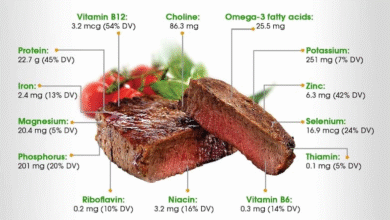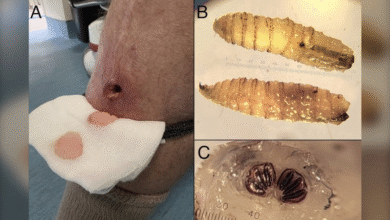Genetic Test for Obesity Prediction: A Breakthrough Study

In recent years, the development of a genetic test for obesity prediction has opened new avenues for proactive health management. Researchers have highlighted the potential of polygenic risk scores to predict whether children are at risk of becoming obese adults, facilitating early intervention strategies. A groundbreaking study published in Nature Medicine attributes the effectiveness of this test to its ability to combine numerous genetic variants into a single risk assessment tool. As early as age 5, children can undergo testing to determine their susceptibility to obesity, allowing parents and healthcare providers to implement obesity prevention strategies long before any physical changes occur. By understanding a child’s genetic obesity risk, we can create tailored lifestyle interventions aimed at mitigating this looming health crisis before it takes root.
The recent advancements in genetic testing have ushered in a new era for anticipating weight-related health issues among children. Specifically, the utilization of genetic indicators, such as the polygenic risk score, enables experts to forecast the likelihood of childhood obesity developing into adult obesity. These innovative predictive tools not only facilitate the identification of at-risk individuals but also pave the way for personalized obesity prevention approaches. By assessing genetic predispositions early in life, healthcare professionals can proactively initiate relevant lifestyle changes. Overall, this intersection of genetics and health marks a significant stride toward combating the rising epidemic of obesity.
Understanding the Polygenic Risk Score (PGS) in Obesity Prediction
The Polygenic Risk Score (PGS) is an innovative tool that aggregates genetic variant effects, providing a comprehensive overview of an individual’s risk for developing obesity. This score is particularly significant for early intervention, as it can identify children at a higher risk of becoming obese adults well before environmental factors start influencing their weight. By analyzing data collected from over five million individuals globally, researchers have established that the PGS can predict approximately 17.6% of a child’s eventual BMI, making it a reliable metric for assessing obesity risk from a young age.
Utilizing the PGS not only allows for early detection of potential obesity in children but also lays the foundation for tailored obesity prevention strategies. The information garnered from the PGS can inform healthcare providers about necessary lifestyle interventions, which can be critical in mitigating the risk of obesity as children transition into adulthood. By understanding a child’s genetic predisposition, parents and healthcare professionals can implement personalized interventions aimed at fostering healthy habits early on.
Frequently Asked Questions
How does a genetic test for obesity prediction work?
A genetic test for obesity prediction primarily uses a polygenic risk score (PGS), which aggregates various genetic variants associated with obesity. This score helps to estimate an individual’s risk of developing obesity, enabling early intervention and obesity prevention strategies.
What is the role of polygenic risk scores in predicting adult obesity?
Polygenic risk scores are crucial in predicting adult obesity, as they can identify individuals at risk from a young age. Research shows that these scores can effectively indicate the likelihood of severe obesity in adulthood, allowing for targeted obesity prevention strategies during childhood.
At what age can children undergo genetic testing for obesity prediction?
Children can undergo genetic testing for obesity prediction as early as age 5. This age allows for preemptive measures that can help combat childhood obesity by implementing lifestyle changes before weight gain begins.
Can genetic testing predict childhood obesity risk?
Yes, genetic testing can predict the risk of childhood obesity through polygenic risk scores. These scores measure multiple genetic factors, providing insights into a child’s likelihood of becoming obese as they grow into adulthood.
How effective is the genetic test for obesity prediction compared to traditional methods?
The genetic test for obesity prediction, utilizing polygenic risk scores, has proven to be twice as effective as previous methods, accounting for approximately 17.6% of the risk for developing a high BMI in adulthood. This advancement marks a significant leap in understanding genetic obesity risk.
What interventions can be used once a genetic risk for obesity is identified?
Once a genetic risk for obesity is identified through testing, effective interventions include early lifestyle changes, dietary modifications, and increased physical activity. These obesity prevention strategies can significantly impact a child’s weight trajectory before major risk factors manifest.
Are genetic tests for obesity risk equally effective across all demographics?
While genetic tests for obesity risk are groundbreaking, they are more effective for individuals of European ancestry compared to those of African ancestry. This highlights the need for more comprehensive approaches and additional research to improve predictive power across diverse populations.
How has the global collaboration among researchers advanced genetic obesity prediction?
An extensive global study involving over 600 scientists led to the creation of the largest genetic dataset ever, enhancing the reliability of genetic tests for obesity prediction. Findings from this research have significantly improved the predictive capabilities of polygenic risk scores.
What is the significance of early genetic testing for obesity prevention strategies?
Early genetic testing allows healthcare providers to identify children at high risk for obesity long before other harmful factors come into play. This proactive approach can lead to timely implementation of obesity prevention strategies, improving long-term health outcomes.
Can lifestyle interventions alter the effects of genetic obesity risk?
Yes, research indicates that individuals with a higher genetic risk of obesity respond well to lifestyle interventions. These strategies can significantly aid in weight loss and management, although there is a tendency for individuals to regain weight after interventions cease.
| Key Point | Details |
|---|---|
| Genetic Test Significance | Predicts potential adulthood obesity risk as early as age 5 through polygenic risk scores (PGS). |
| Polygenic Risk Score (PGS) | Combines multiple genetic risk variants to assess obesity risk accurately. |
| Research Collaboration | Study involved over 600 scientists and 500 global institutions, contributing to the largest genetic dataset ever. |
| Effectiveness of PGS | Twice as effective as previous tests, accounting for roughly 17.6% of risk for high adult BMI. |
| Implications for Early Interventions | Supports preventative lifestyle changes in children at risk, which can significantly impact obesity outcomes. |
| Limitations | More effective for individuals of European ancestry and less so for individuals of African ancestry. |
| Future Perspectives | Aims for clinical application in genetic obesity risk testing. |
Summary
The genetic test for obesity prediction is a revolutionary approach that enables the identification of children at risk of becoming obese adults as early as age 5. This innovative polygenic risk score (PGS) method assesses genetic variants to provide personalized insights that can facilitate early intervention strategies. By implementing lifestyle modifications at a younger age, we could significantly alter the trajectory of obesity in the future. With the World Obesity Federation estimating that a majority of the global population will face obesity issues within the next decade, utilizing genetic testing to predict obesity risk is not only beneficial but essential for effective public health strategies.




